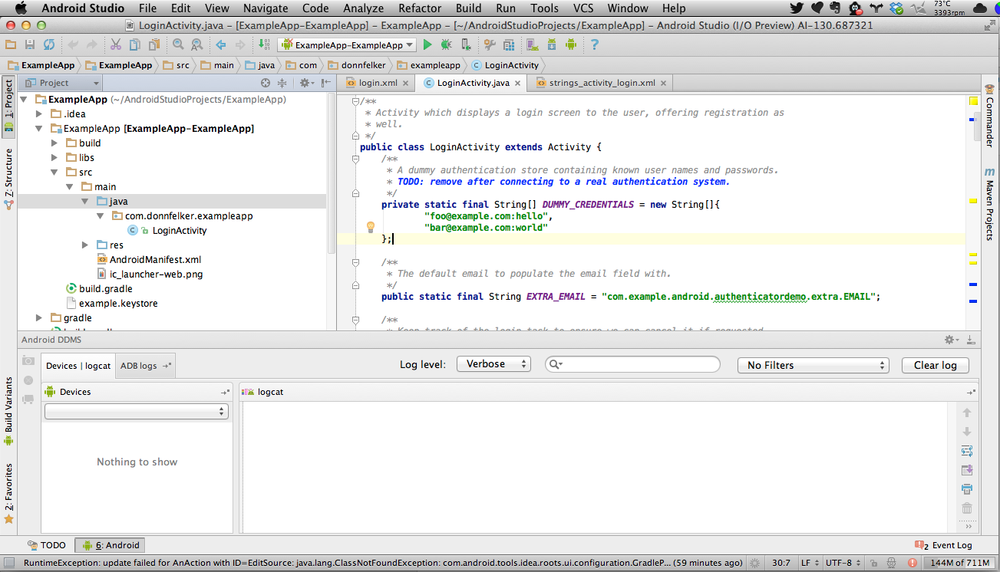Chapter 6. Developing with Android Studio
Android Studio (shown in Figure 6-1) is the IDE for Android that was announced in May 2013 at the Google I/O developers event, and is intended as an alternative to Eclipse. At the time of this writing, Android Studio is currently in Early Access Preview, with the most recent version being 0.0.5. At this time, Android Studio is not ready for full end-to-end Android application development, but should be ready in the coming months. I highly advise you review this chapter, as this is where Android development is migrating to in the future. Android Studio is based on the Java IDE called IntelliJ. If you’ve worked with other products by JetBrains (developer of IntelliJ), such as RedMine, PyCharm, PhpStorm, WebStorm, or AppCode, you will find yourself at home. All IntelliJ products share the same shell IDE, which you’ll see as soon as you open up Android Studio. In this chapter, I intend to familiarize you with Android Studio and show how you can use it for Android development.

Although Android Studio is a brand new IDE, it is important to note that most of your IDE skills from Eclipse apply to Android Studio as well. Most of the tooling in Android Studio is very similar to Eclipse, such as shortcuts, designers, and code editors. You’ll still export signed APKs, view ...
Get Android Developer Tools Essentials now with the O’Reilly learning platform.
O’Reilly members experience books, live events, courses curated by job role, and more from O’Reilly and nearly 200 top publishers.

